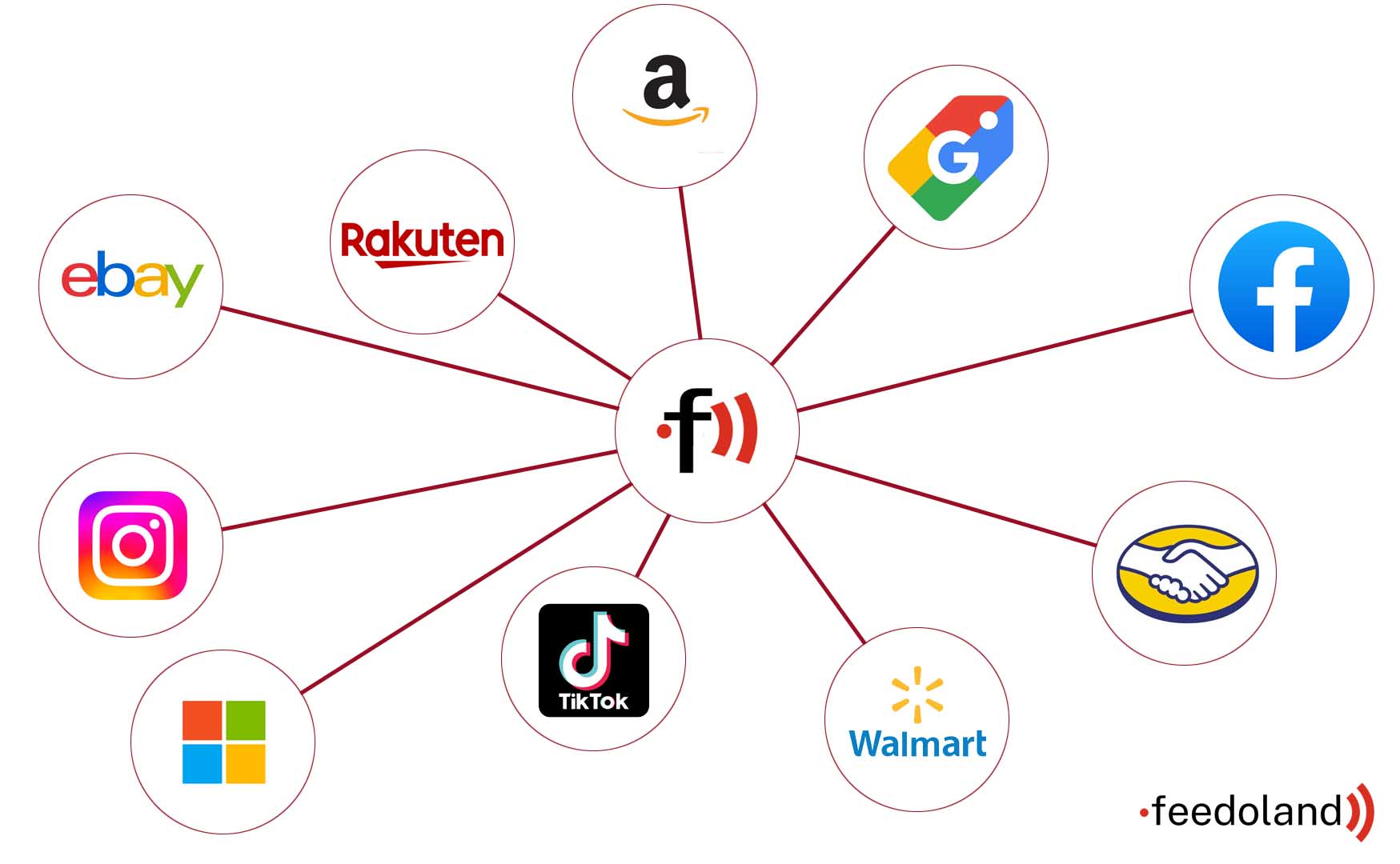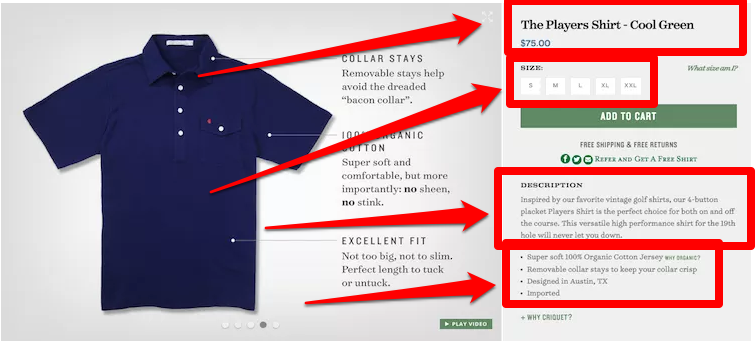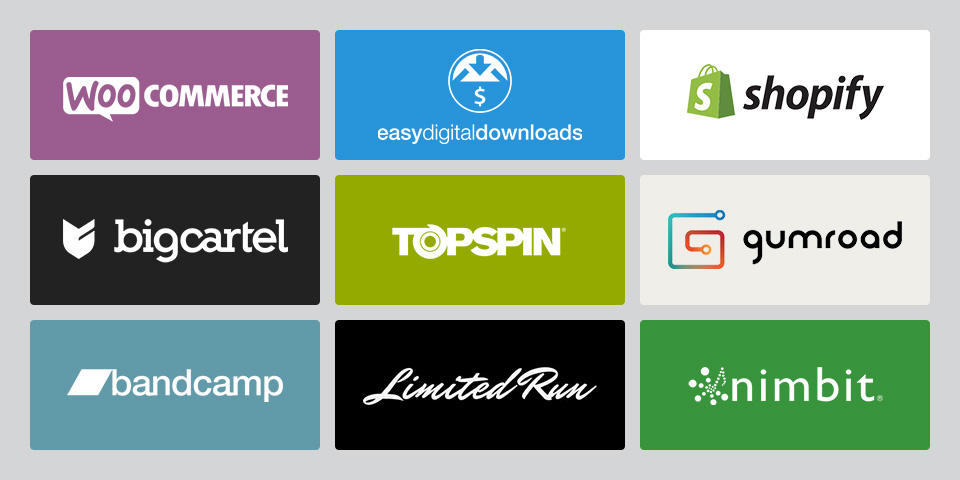Mastering the Pulse: Unveiling Product & Data Feed Management

In today’s digital age, the online shopping journey has been reimagined to include everything from finely tailored ads to the use of augmented reality for a virtual “try-on” experience. E-commerce platforms are tirelessly innovating to smoothen the shopping trail, introducing patrons to an array of conveniences and personalized touches, ensuring every click brings them closer to their ideal purchase.
For merchants aiming to carve a niche in the bustling e-commerce marketplace, a robust online presence is indispensable. However, this necessitates a firm grasp of pivotal technologies such as data feed optimization services. The digital commerce arena is an intricate web, and at its core, data acts as the binding thread, orchestrating a seamless interaction between buyers and sellers. By honing data feed management, merchants not only streamline the shopping experience but also unlock new vistas of customer engagement, propelling their business to new heights in a competitive landscape.
In the digital bazaar, data feed management emerges as a critical compass guiding the distribution and governance of your product listings. This entails deploying sophisticated online tools to refine listings, ensuring they shine across diverse channels, seamlessly transmitting and receiving precise retail feed data from each avenue, and keeping the inventory tally on external platforms meticulously updated.
The sphere of eCommerce hosts a variety of data feeds, each serving a distinct purpose. For instance, news buffs can find a trove of headlines aggregated in a news feed, while finance aficionados can leverage finance feeds to keep a pulse on market gyrations. However, when we traverse the realm of ecommerce, product data feed tools become our trusted allies, facilitating the smooth transit of product data across the digital ecosystem. Throughout this discourse on ecommerce, the terms “data feeds” and “product feeds” will waltz together, portraying the quintessence of digital product orchestration.
Hold that click! Before diving deeper, let’s unravel the essence of a product feed. A product feed is essentially a digital dossier, brimming with vital product data destined for crafting captivating product listings.
Here’s a glimpse into the kaleidoscope of information a product feed may hold:
– Title: The product’s calling card, its name.
– Images: The visual tour, showcasing the main image along with diverse angles of the product.
– Description: The narrative that unveils what the product embodies.
– Price: The ticket to ownership, the cost of the product.
– Categorization: The digital aisle where the product resides, be it a department or a specific category.
– Availability: A real-time update on whether the product is ready for the taking.
– Quantity: A tally of how many units are up for grabs.
– Bullet Points: The highlight reel, underscoring important features or selling propositions.
– Pixel ID: The digital breadcrumb, essential for tracking and re-engaging curious onlookers.
– Other Key Attributes: The fine print detailing material, size, color, age suitability, gender appropriateness, special features, and more.
Each of these facets intertwine to paint a comprehensive picture, ensuring that potential buyers are well-informed and enticed as they journey through the digital marketplace.
In a nutshell, data feed management or product feed management is akin to orchestrating a digital caravan, ferrying product data from its origin to fresh frontiers. Sounds straightforward, doesn’t it? Well, on paper, it might seem like a breeze. However, when you find yourself at the helm of a sprawling inventory, managing hundreds or even thousands of SKUs, or navigating the bustling marketplace of multi-channel selling, the simplicity morphs into a complex endeavor.
The challenge amplifies as each channel often beckons with its own set of formatting requisites and data protocols. It’s like speaking different dialects in a bustling digital commerce city. Ensuring that each product listing is not only accurately translated but also optimized for performance across these diverse channels requires a blend of meticulous attention, technological finesse, and a robust data feed management system. This digital dance is crucial for keeping the shelves of your online storefront well-stocked, accurately priced, and enticing to the global cadre of e-shoppers.

The Imperative of Data Feed Management
Merchants rely on robust product data to orchestrate listings or craft ads on search channels like Google, social commerce arenas like Facebook, and bustling marketplaces like Amazon or Target Plus.
Each channel lays down its own set of rules for listing products, along with a gamut of best practices that can make or break the performance of your listings. A misstep in your data or a sub-optimized listing can throw a wrench in the conversion rates, and may even shroud your products from the eyes of eager customers.
Trust is the cornerstone of a customer’s journey to the checkout. They are on a quest for information, and every nugget of detail in a product listing is a beacon guiding their purchasing decision. The data doesn’t just talk to the customer; it also whispers to the shopping channel, delineating what the product is, and orchestrating the search queries that prompt the listing to grace the search results.
The conduit to ferry product data to shopping destinations varies. The manual route allows for the creation and updating of listings on the channel by either a meticulous keying in of product data or a bulk upload via a spreadsheet. This pathway is a good fit for merchants whose product repertoire is on the leaner side.
However, for merchants juggling a larger product catalog or grappling with frequently changing product data, an automated liaison between your data reservoir and the channels you’re listing on emerges as a more scalable and less error-prone strategy.
These automated integrations are your ticket to dispatching product feeds to a medley of channels and keeping them fresh as a daisy. The symphony of product data across diverse systems, platforms, and channels forms the bedrock of a thriving ecommerce venture, ensuring a seamless tapestry of interactions in the digital commerce theater.

At its heart, data feed management weaves a network of connections among your data across diverse channels, tailoring your product listings to the unique tune of each, and orchestrating a rhythm of regular updates to keep them in sync.
This positions data feed management as a cornerstone in the architecture of any online retail strategy. Harnessing the knack of optimizing your data doesn’t just elevate your business operations, but it also polishes the customer experience to a shine. Through the lens of data feed management, ad campaigns morph into more potent customer magnets, the horizon of your customer base expands, and the gears of your ecommerce operations spin smoother and faster.
Determining the Right Time to Implement a Data Feed Management Solution: A Guide
Navigating the digital marketplace is not a one-size-fits-all journey. The necessity for external assistance in data feed management often hinges on the breadth of your product catalog, the prowess of your in-house resources, and the array of channels you aim to showcase your products on. However, for a substantial number of merchants, integrating a data feed management solution propels their ecommerce venture to a higher echelon of efficiency and effectiveness.
Envision yourself as a merchant, armed with a catalog bursting with hundreds of products, and an ambition to unfurl your offerings across multiple digital channels. Your commerce empire spans a physical storefront, an online shop nestled on your website, and a robust ecommerce platform like BigCommerce or Shopify serving as the bastion for your product data.
Your aspirations extend to casting the digital net of your advertisements on the waters of Google and Facebook, driving a torrent of traffic to your website, while also establishing a sales outpost on the bustling marketplaces of Amazon and Walmart. The puzzle to solve: How to fan the flames of your online store’s promotion in the most efficient and potent manner?
In the absence of a data feed management solution, a gauntlet of challenges awaits:
– Every channel presents a unique rulebook of requirements and policies to which you must adhere for a smooth sailing of your product listings and sales.
– With a voluminous catalog at hand, but no existing integration with each channel, the task of listing your products individually morphs into a Herculean endeavor.
– While your ecommerce platform might offer a handshake with certain channels, the scope of tweaking or formatting your product data might hit a wall.
– A dearth of resources, expertise, and time casts a shadow on your ability to categorize your products with precision and fine-tune your listings for stellar ad campaigns and search relevance.
– Keeping the inventory tally accurately mirrored on each channel is crucial to sidestep the quagmire of overselling and the subsequent cancellation of customer orders.
– The routine of diving into the seller portal of each marketplace to process and fulfill orders emerges as a cumbersome chore, especially when orders are pouring in thick and fast.
– Hitches in your raw data could spell doom for your product listings, triggering disapprovals and delisting from channels.
Harnessing a data feed management solution could be the compass guiding merchants through these rough digital waters, ensuring their ecommerce ship sails smoothly towards the horizon of success.
How Can a Robust Data Feed Management Solution Propel Your Business?
Navigating the Digital Marketplace: Unveiling a World of Opportunities with Streamlined Data Feed Management
The task of listing products on a single channel can unfurl a tapestry of challenges, often deterring companies from venturing into additional channels, thereby sidelining a broader customer outreach.
Every marketplace and advertising conduit presents its own set of baseline requisites for product listings. It falls upon the merchants to furnish precise information and attributes in a product catalog, aligning the data formatting with the channel’s standards to ensure uniform listings across the board. Even minute hiccups in punctuation, syntax, spacing, or capitalization can throw a spanner in the works, barring a product from being accepted.
Elevating your product feed to a realm where clean and coherent product titles, descriptions, bullet points and more are the norm, not only amplifies search relevance but also fuels conversion rates. Incorporating the essential and suggested attributes in your product data cultivates high-caliber listings that strut their stuff impressively across a multitude of channels.
The ideal data feed management solution unfurls an automated avenue for listing products on diverse channels, armed with a dynamic integration tool that tailors your listings to resonate with each channel’s requisites and best practices. Such a solution also takes the reins in categorizing your products accurately, ensuring they find their rightful spot on the channel. Given that shopping channels extend the luxury of filtering products based on various attributes, accurate and detailed categorization not only hits the bullseye in product placement but also brings you face to face with customers who are on the lookout for exactly what you have on offer.
Seamlessly Sync Order Data Between Your Ecommerce System and Listing Channels Automatically
When a purchase rings through a marketplace, the data must journey back to the merchant’s order management citadel. While this trek can be made manually by delving into the seller channel of the marketplace to harvest the data, the task morphs into a Herculean endeavor amidst a cascade of orders across multiple channels.
The crème de la crème of data feed management solutions boast a two-way integration, offering a golden bridge to effortlessly sync order data between the diverse channels and your ecommerce stronghold. This ensures the data migration is precise, swift, and always in the now.
A hiccup in the data synchronization melody often heralds a delay in order fulfillment, flings wide the gates for user errors and missteps in data processing, and could set the stage for missed shipping beats and cancelled orders. Should this tune play on a loop, your business might find itself dancing on thin ice, with potential ramifications like plummeting seller metrics, a narrowed gateway to marketplaces, and a dip in the spotlight shining on your products. And let’s not forget, the ripple could touch the shores of customer experience, possibly stirring a storm of negative reviews.
In a realm where order volume is high or is envisioned to climb, smoothing out the fulfillment process and minimizing the room for errors or delays is paramount. Merchants who play their trade on multiple marketplaces must don a cloak of organization and bear the agility to process orders, each with its own rhythm and format.
Embarking on a multichannel or omnichannel odyssey, with marketplaces as ports of call, necessitates a robust order management compass. The digital consumer chorus resounds with a desire for a seamless and consistent omnichannel serenade. With the right technological maestro, the order fulfillment dance becomes automated, instilling confidence that your data is whisked accurately and efficiently between realms.
Implement Data Governance Protocols: Shield Your Data, Fortify Your Business
At its core, what does data governance signify? It’s the architecture of quality assurance, laying down a framework of checks and balances to uphold the sanctity of your data.
Think of data governance as your preemptive strike against potential glitches. It’s like having a vigilant sentinel that halts exports and sounds the alarm when anomalies in your raw data are spotted. Sure, a channel might flag errors in your listings post catalog update, but such reactive maneuvers don’t jibe well with a thriving ecommerce narrative, often translating to missed sales opportunities.
Data governance is your lens to spot when products are bereft of crucial attributes, if there’s a sudden drought in stock levels, or if the automatic application of data optimizations is falling through the cracks. With data governance at the helm, you’re not just reacting to issues, but orchestrating a well-tuned response to ensure smooth sailing in the digital commerce waters.
Discover Feedoland
Data Feed Management Unveiled: A Spectrum of Tasks and Processes
Data Feed Management Unveiled: A Spectrum of Tasks and Processes
1. Product Listing Magic:
Transitioning product data from its source(s) to create listings elsewhere is a journey with many steps. Picture being a merchant invited to the Target Plus arena, with Magento as your ecommerce haven housing thousands of SKUs, previously only showcased on your own site. The quest to port your products to Target Plus could lead to hiring developers for a custom integration via Target’s API, or joining forces with Target’s product listing allies. Right categorization is your key to ensure, for instance, a spatula isn’t lost amidst athletic gear. Partners like Feedonomics can tailor your data to meet Target’s listing norms, even melding data from various sources like Magento and a supplementary spreadsheet to craft a hearty catalog for the marketplace.
2. Optimization Odyssey:
Product feed optimization is your map to help listings reach their zenith with robust and accurate data. Prepping product titles for a Google Shopping spree by including brand name, product name, relevant descriptors, and more, is one step towards enhancing search relevance. Unlike keyword bidding, Google gauges your product data to dictate when and where your products grace the search results, making optimization pivotal. Assigning apt product types, applying custom labels based on sales performance, cost, seasonality, etc., empowers you to segment ad campaigns and bid with a strategic lens.
3. Sync Symphony:
Post-upload to a shopping channel or marketplace, the data beat must go on with regular updates. Be it new additions, stock refreshes, price amendments, image replacements, or tweaking descriptions, data feed management keeps the data tune harmonious and accurate for customers. Consider a scenario where inventory updates lag, leading to overselling and order cancellations on Walmart, which could play a sour note on your seller rating and customer experience. A stout data feed management tool orchestrates automated, frequent inventory updates, and even allows buffer setups to avert overselling when stock dwindles.
4. Order Management Marvel:
Automating the order data relay between different channels and your ecommerce systems, data feed management solutions smooth out the order fulfillment rhythm, reducing shipping errors, data discord, and souring customer experiences. For instance, connecting a Shopify store to eBay, an effective order management solution auto-fetches new eBay orders into Shopify, making them feel right at home. The usual Shopify workflow then takes over for order fulfillment, with tracking info seamlessly relayed back to eBay, keeping the customer in the loop.
5. Governance Guardian:
Data governance is your shield against major data calamities. It sets up responsive triggers, much like guard rails, to alert or halt operations when data behaves oddly. Envision a warehouse system crash marking all products out of stock. Here, data governance could halt the product feed dispatch to channels if an unusual percentage of products are out of stock, or maybe just shoot an alert your way. It’s your watchtower for pricing anomalies, missing images, and other data concerns, keeping you informed and in control.
Data Feed Mastery at Feedoland
Navigating the realm of data feed management presents a variety of avenues. There’s the app-driven route that shuttles your product listings to other channels without much finesse, or the hands-on manual crafting of optimization rules. However, apps often fall short on reliability, flexibility, and channel integrations, not to mention a noticeable lack of technical support. The manual route, on the other hand, tends to invite a parade of user errors, turning your focus towards troubleshooting rather than driving sales forward.
Feedoland’s Comprehensive Data Feed Management Solutions:
At Feedoland, we unfurl a suite of solutions catering to marketplaces and advertising channels, all under the umbrella of full-service feed management complemented by round-the-clock support. Our seasoned feed maestros are well-versed in the diverse channel requirements and are always on the lookout to elevate your listings. We swap the need for merchants to dive into channel integrations and feed optimizations with our adept feed managers, who are Feedoland power users ready to bear the brunt of the technical toil for you.
Our platform is in a constant state of evolution, with new channel integrations, features, and enhancements continually joining the fold.
In the dynamic commerce arena, possessing accurate and steady data is your ticket to standing tall amid competition. Companies faltering in executing their ecommerce strategy often find themselves lost in the crowd, struggling to outshine competitors. With a robust data feed management solution, you gain the assurance of apt data handling, paving the way for expanding customer reach and bolstering online presence.
Partnering with Feedoland lifts the weight of listing management, data syncing, and safeguarding the precision and integrity of your product data from your internal teams. Especially when the resource, time, and expertise reservoir is running low, our feed specialists step in to navigate complex integrations, polish product listings, rectify errors, and much more. This leaves you with ample bandwidth to tackle the daily business hurdles. Embark on a demo journey with us today to discover the full-service feed management solution that resonates with your needs.
.
